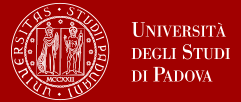
Research
Coupled hydrodynamics, transport, and biogeochemical modelling
CIMoLa modelling activities within the Venezia 2021 project, in collaboration with CNR-ISMAR (Venice) and OGS (Trieste), focus on the development and application of integrated models of the Venice lagoon system that will supersede state-of-the-art models and, in particular, will move beyond disciplinary boundaries. This objective is dictated by the importance of predictive modelling tools at the whole-lagoon scale that allow the quantitative description of hydrodynamic processes, erosion, deposition, and sediment transport, as well as the coupled biological processes. In particular, the activities planned in this research line will include: the improvement of hydrodynamic and hydrologic forecasting tools, the coupling of existing hydrodynamic and biogeochemical models, the comparison of state-of-the-art circulation model outputs under reference conditions and under change scenarios, the coupling between hydrodynamic and hydrologic models of some sub-basins within the Venice lagoon watershed, the calibration and application of sediment transport models to infer morphodynamical trends over a projection horizon of 50 years, the evaluation of the hydrodynamic and biogeochemical ‘states’ of the system at the end of the same period. The proposed activities will produce a synthesis of the modelling tool developed over the course of the last 20 years, yielding new integrated tools that can be used in support of real-time decision making (e.g. with regard to expected water level, salinity, and concentrations of possible pollutants), as management support tools with respect to the long-term morphological evolution (effectiveness of possible measure to slow down the eco-morphological degradation of the lagoon), as pilot tools of integrated hydrologic-hydrodynamic real-time prediction (limited to the inclusion of models of two hydrologic subsystems from the lagoon watershed) describing the responses of the watershed-lagoon-sea continuum to varying large-scale forcings (chiefly rainfall and sea levels). In order to achieve these objectives, this research line is based on the collaboration among research groups that have developed some of the reference lagoon dynamical models. The research units will initially collaborate to the organization, homogenization, and completion of existing datasets. Secondly, the research units will collaborate with the production of benchmarking simulations over reference periods over which to evaluate the uncertainty associated with different parameterizations of the physical processes at play. Finally, by bringing to fruition the diversity of know-hows brought together into the research line, the group will develop and test the first modelling chain to include the relevant lagoon hydrologic, hydrodynamic, morphodynamic, and biological processes. Activities will be performed under the leadership of personnel from the participating institutions but will involve the ample participation of Ph.D. students and Post-Docs hired for the purpose. An important result of the project will be the formation of a new generation of scientists who may allow public institutions with competence over the Venice lagoon to maintain and expand their technical offices, responsible for monitoring and managing the Venetian lagoon environment.
Eco-geomorphic observations and modelling
The Venice Lagoon is characterized by relevant morphological features like tidal channel networks, subtidal platforms and tidal flats, and salt marshes. Such features evolve, both in elevation and spatial extent, as a result of the interaction between physical (e.g. tidal currents, wind waves, sediment supply and rates of relative sea-level rise) and biological (e.g. those induced by phanerogams and halophytic vegetation on the flow field and sediment budgets) processes. Positive and negative feedbacks between physical and biological processes are strongly affected by anthropic pressure. Sustainable management of the Venice Lagoon ecosystem, and its related activities, requires monitoring, describing and predicting erosive and depositional processes that control the morphological end ecological evolution of the lagoon, through an integrated and interdisciplinary framework. The need for such a study is emphasized by the morphological degradation that has characterized the Venice Lagoon in the last century, which could be further exacerbated by the functioning of MOSE mobile gates.
CIMoLa research activities, in collaboration with CNR-ISMAR (Venice) and the University of Venice, focus on analyzing the evolution of biogeomorphological patterns that characterize the typical lagoon morphological structures, with particular attention to marsh surfaces and tidal channel networks cutting through them, on the basis of an innovative and interdisciplinary framework that integrates field observations, collected both in situ and through remote sensing, with mathematical modelling. Such an approach will enable one to estimate the ongoing erosive and depositional processes and the development of a mathematical model that will allow the prediction of the evolution of such morphological structures in response to changes in the external forcing of both natural and anthropic origins.
The collaborative research pursued, with intertwined activities and objective, include: 1) monitoring the temporal evolution of tidal channel morphology, through high-resolution acoustic morpho-bathymetry (multibeam echosounder), and marshes, through photogrammetry from unmanned aerial vehicles (UAV), 2) in situ observations aimed at characterizing soil properties and quantifying sediment erosion, transport and deposition rates on marsh surfaces and within tidal channels. In situ analyses also investigate the relation between the spatial distribution of halophytic vegetation and soil elevation, 3) integration of the data collected to set up and test a spatially-explicit ecogeomorphological metacommunity framework to model the coupled evolution of marsh elevations and vegetation cover.






